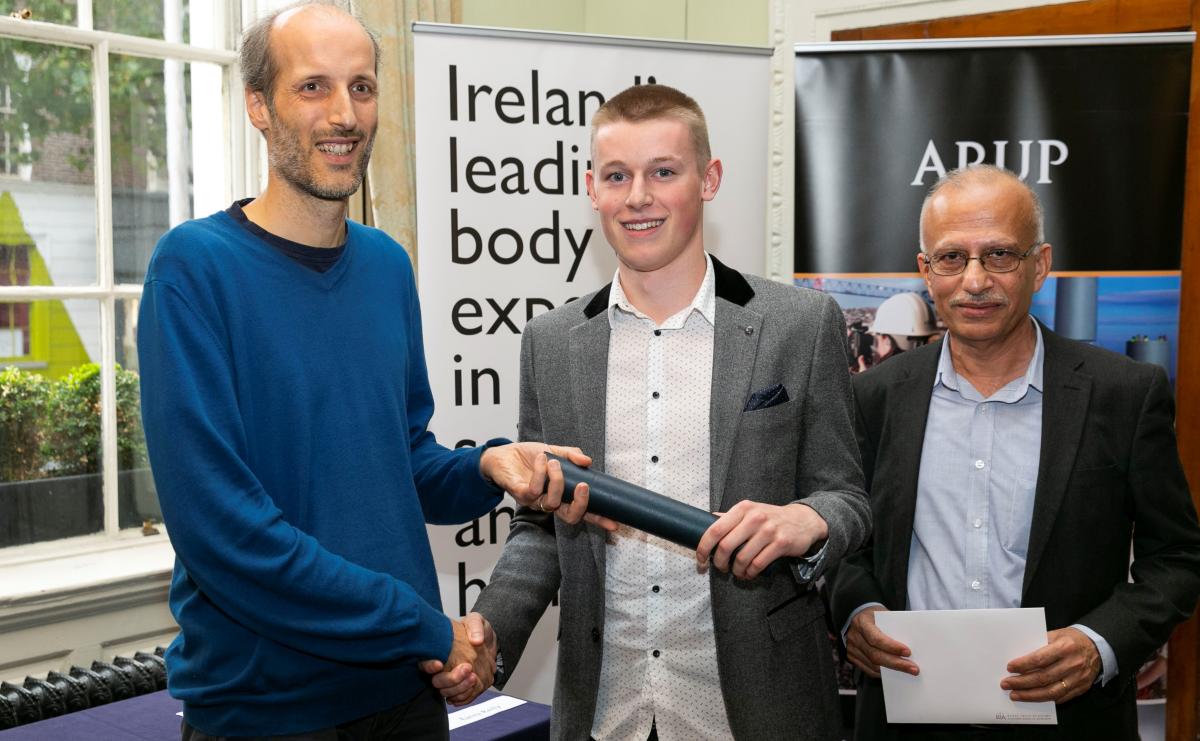

DCU student Eanna Reilly wins Hamilton Prize in Mathematics 2018
Eanna Reilly, undergraduate student in DCU’s School of Mathematical Sciences, has this week been awarded the Hamilton Prize in Mathematics for 2018.
Eanna is one of nine students from across Ireland to receive this prestigious honour.
As with every year, the Royal Irish Academy celebrated the anniversary of William Rowan Hamilton’s discovery of quaternion algebra (16 October 1843).
Hamilton Day 2018 began with a masterclass for students and early career researchers in mathematics, given by this year’s Hamilton speaker, Professor Martin Hairer, from Imperial College London.
The masterclass was hosted by ARUP, sponsor of Hamilton Day, and gave young researchers the opportunity to learn from a leading expert in the field.
Hamilton Day celebrations continued with an award ceremony honouring Eanna and the eight other undergraduate mathematics students in Ireland, each recipients of the Hamilton Prize in mathematics.
The ceremony took place at Academy House, Dawson Street, and was attended by family and friends of the recipients, as well as representatives from their university departments and members of the mathematics community in Ireland.
The Hamilton Lecture, taking place at Trinity College Dublin, rounded off a day of commemorating the great Irish mathematician William Rowan Hamilton. This year’s lecture was given by 2014 Fields Medallist Martin Hairer, a leading scientist in the field of probability theory. Martin Hairer has advanced the field of stochastic partial differential equations (SPDEs) by providing a toolkit for addressing these previously thought inaccessible problems. Martin’s work is also furthering the more general areas of stochastic analysis — a part of mathematics concerned with random processes — and stochastic dynamics.
In his Hamilton lecture, Martin discussed mathematical objects arising naturally in probability theory, as well as some of their surprising properties. In particular, he showed how one of these objects was involved in the confirmation of the existence of atoms over 100 years ago and how new properties of related objects are still being discovered today.
(Photo: Johnny Bambury Photography)
